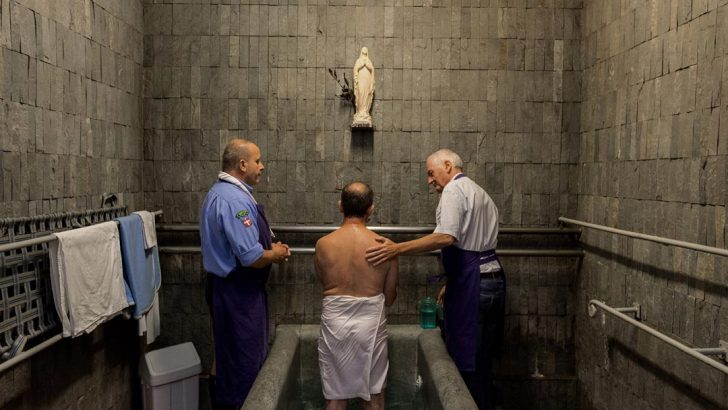Since 1858, when the first miracles were recorded, the Church has judged only a very small number of cures as truly miraculous – to date some 69. The Church can be as sceptical at times as any Zola.
The most recent recognition was in 2013 of the curing of Mrs Danila Castelli, suffering from a tumour on her bladder, who experienced the miracle in the baths on May 4, 1989.
The Medical Bureau holds records of many others, running up to more than nearly 7,000. Perhaps 1500 of these are seen as “inexplicable under natural laws”, but are not yet judged to be miracles.
One of the most interesting of the many accounts concerns a Dubliner, Charles McDonald, whose cure was first widely reported to the world by The Irish Catholic in an article in 1937.
McDonald later published a little book of his own. In Miracle at Lourdes (Dublin: Clonmore & Reynolds, 1954; out of print) he describes how, crippled by TB in his trunk, spine, kidneys, and lungs, he was taken to Lourdes by stretcher. One night in the hospital the doctor told the nurse in charge, “Do not leave poor Charlie. He cannot possibly live till morning.”
But “poor Charlie” did more than survive the night.
The next day he asked to be taken down to the baths and to be dipped in the cold spring water. On the first occasion he felt a severe shock, but the second time he was suffused with a feeling of peace.
In a mere seven seconds his condition had been cured. The bones stopped decaying, the fistulae dried up, his kidneys and lungs cleared, his skin healed. He could now get out of bed and dress himself. His book reproduces the testimony of his original doctors, images of x-rays taken just before publication, and a report by a Dublin surgeon.
“I was a new man. I walked out of the water a complete cure, in perfect health and I have never looked back.”
Oddly McDonald’s extraordinary cure is not among the recognised miracles. Yet to the normal person it seems very remarkable.
Charles McDonald’s reaction to his cure was equally remarkable; to him it was not as it might be to a sceptic, a proof of God’s existence. Far from it; for him it was a humbling feeling that through the intercession of Bernadette’s “Lady of Lourdes” he had been picked out for divine attention, the finger of his creator had reached out to touch him directly. He found that a mind-numbing thought
But there are miracles and miracles. The cure of an affliction is striking and very visible to us. But we know that there are other kinds of miracles, other kinds of solace at Lourdes: the alcoholic who reforms himself, the violent husband who learns mildness, the errant children who find a new way, the women who find renewed purpose in their often difficult lives.
Those kind of events are never registered, but they too are a part of the extraordinary influence of Lourdes.


 Peter Costello
Peter Costello
